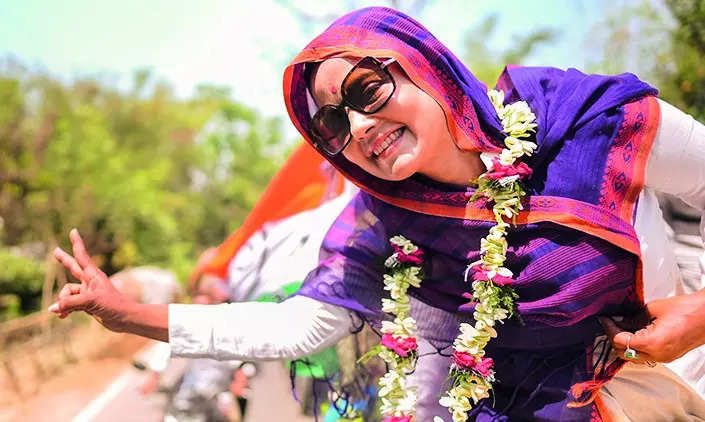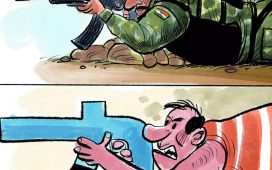
The appropriateness of traditional desi garments becomes most blindingly evident in summer. A woman parliamentarian, who is the darling of the cosmopolitan set for her chic urban style and cutting articulation, becomes a cotton-encased Bharatiya Nari on the election trail. Handloom saree draped loosely and demurely covering her head, full-sleeved blouse encasing arms and midriff, only her outsized designer sunglasses set her apart from the similarly cocooned women listening to her campaign spiel. They are united in their battle against the unrelenting sun.
Ditto for her male counterparts who tend to ditch their international fashion brands at election time to make common cause with the more vernacular style of hinterland habitues. Their sartorial preference veers towards long-sleeved, billowing cotton kurta-pajamas and, in many cases, voluminous headgear that serves both as insulation from the searing sun as well as a shade for the eyes. Even their footwear is focused on keeping toes cool and free from gravel.
Judging from the photographs of polls for Lok Sabha and state assemblies that have been held in summer months over the past seven decades, it is clear that election fashion has remained timeless in India.
Indira Gandhi‘s trademark long-sleeved-blouse-with-cotton-saree-over-head look is as prevalent today -across party lines – as is the white cotton kurta (or full-sleeved white shirt in most south Indian states) and pajama/dhoti/veshti right from the Nehruvian era.
In the West, any hint of heat and sun makes people shed clothes rather than put on more layers, in contrast to those living in climes that are more consistently hot. Long before ultraviolet rays and skin cancer became cautionary tales, wrapping up rather than doffing layers has been the norm in predominantly sunny precincts. From the brightly voluminous skirts, tunics and turbans of equatorial Africa to similarly enveloping cotton drapes along the same South Asian latitudes.Canny netas donning local drapes and turbans on the campaign trail are often the target of derision in urban media, the implication being that these choices are just gimmicky gestures. Apart from the fact that the local population has quite a different opinion on such ‘tokenism’, these adoptions by candidates actually often helps them weather the climate much better too. Like using the wide-brimmed bamboo hats of north-eastern communities to ward off the summer sun.Indeed, many quintessentially Indian items of clothing are far more suited to the weather than the most technologically advanced ‘dry-fit’ garments used, say, by top sports people playing in sweaty conditions. Even if polymers preventing humidity from wetting fabric surfaces thereby helping evaporation sounds pretty cool to a certain generation, it is a prickly heat-inducing thought for many people of my vintage. It is hard to beat pure, airy cotton when it comes to heat.
That said, making ‘dry-fit’ election wear could be a lucrative market for clothing technology companies, given that India is in almost-perpetual election mode. Particularly since there are more people than merely netas and their party cadres involved in the poll process.
From local teachers and officials manning polling centres to those attending daytime rallies and meetings, there is a huge potential market for cool, non-sportswear garments during Indian summer elections.
Of course, if India does get round to ‘One Nation One Election’, that too set in a more temperate time of year, dryfit pollwear may not ever be necessary. And as no tech company or fashion house appears to have taken up this challenge as yet, our netas are still sticking to time (and heat) tested traditional garments -with local variations – for their shy at the hustings this scorching summer. Leaving people like us to admire the enduring appeal of desi poll-itical chic!











